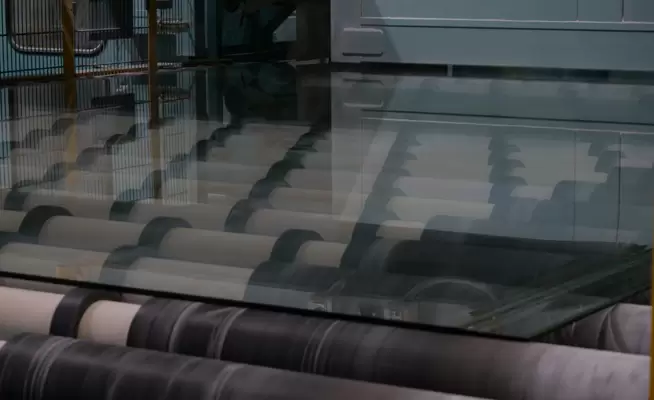Introducing Translucent Aerogel Glass Bricks: Revolutionizing Architecture with Light and Insulation
Glass bricks have long been admired in architecture for their ability to infuse buildings with natural light. However, their limitations in load-bearing applications and poor insulation properties have hindered their widespread use. In a remarkable breakthrough, a team of researchers at Empa, the Swiss Federal Laboratories for Materials Science and Technology, has created a translucent glass brick with exceptional thermal insulation, thanks to the integration of aerogel. These innovative bricks open up exciting possibilities for constructing aesthetically pleasing, light-filled walls that reduce reliance on artificial lighting within buildings.

Transparency Meets Insulation: The Advancement of Aerogel Glass Bricks
Glazed construction elements have gained popularity in architecture as they allow for the optimal utilization of eco-friendly daylight while reducing the need for artificial lighting. To fully harness this advantage, it is essential to use glass elements in the construction of entire walls, ensuring effective thermal insulation and load-bearing capabilities. Until now, a combination of these properties has been unavailable in the market.
The groundbreaking aerogel glass bricks developed by Empa address this limitation. Silica aerogels, renowned for their exceptional thermal insulation properties, are now finding increasing application in the construction sector. In 2017, Empa researcher Jannis Wernery and his team conceptualized the idea of integrating aerogel into a building brick, resulting in the creation of the “Aerobrick.” By incorporating aerogel directly into the brick, this innovation eliminated the need for an additional insulation layer, thus saving heating costs.
To further enhance the insulating performance of the Aerobrick and take advantage of its transparency, Wernery, Michal Ganobjak, and their colleagues at Empa developed the aerogel glass brick. This novel modular component combines float glass and silica aerogel granules to create a translucent and insulating building system. By utilizing offset spacers between the glass panes within the brick, Empa researchers achieved a remarkable balance of strength, insulation, and light transmission while minimizing heat transfer.
Unprecedented Performance and Versatility
The aerogel glass brick boasts extraordinary thermal conductivity, measuring at 53 mW/(m∙K), and impressive compressive strength of nearly 45 MPa. These figures represent the highest insulating performance among all bricks documented in technical literature, setting a new industry standard. Furthermore, the bricks allow the passage of diffused daylight, ensuring privacy while harnessing the benefits of natural illumination.
The potential applications of aerogel glass bricks are vast and diverse. They are particularly well-suited for spaces where high daylight penetration, glare protection, and privacy are simultaneously desired, such as offices, libraries, and museums. Beyond that, these bricks offer new design possibilities for a range of settings, including dormitories, hospitals, greenhouses, and densely built urban areas. Architectural elements like Trombe walls, courtyards, and atriums can also benefit from the heat generation potential of infrared radiation from sunlight.
Affordability and Future Prospects
Material cost analysis demonstrates the competitive nature of the insulating glass brick, making it an attractive option for various applications. This breakthrough opens up a realm of possibilities for architects and builders, providing ample daylight in both new constructions and renovations. Recognizing the immense potential of the aerogel glass brick, the researchers have already filed a patent application and are actively seeking industrial partners to further develop this technology.
The project receives support from the Velux Stiftung, Project No. 1440, dedicated to the development of highly insulating translucent glass bricks for diffusive daylighting. The project was initiated with assistance from the Horizon 2020 Research and Innovation Program of the European Union, specifically the Marie Skłodowska-Curie Actions, under contract number 746992.
With Empa’s pioneering work in translucent aerogel glass bricks, the future of architecture is set to shine brighter than ever before. These innovative building components promise to transform the way we interact with our built environment, seamlessly blending aesthetics, energy efficiency, and sustainable design principles. Stay tuned as Empa continues to shape the architectural landscape with its groundbreaking advancements.
Source: www.empa.ch | REMIGIUS NIDERÖST with additional information added by GlassBalkan







